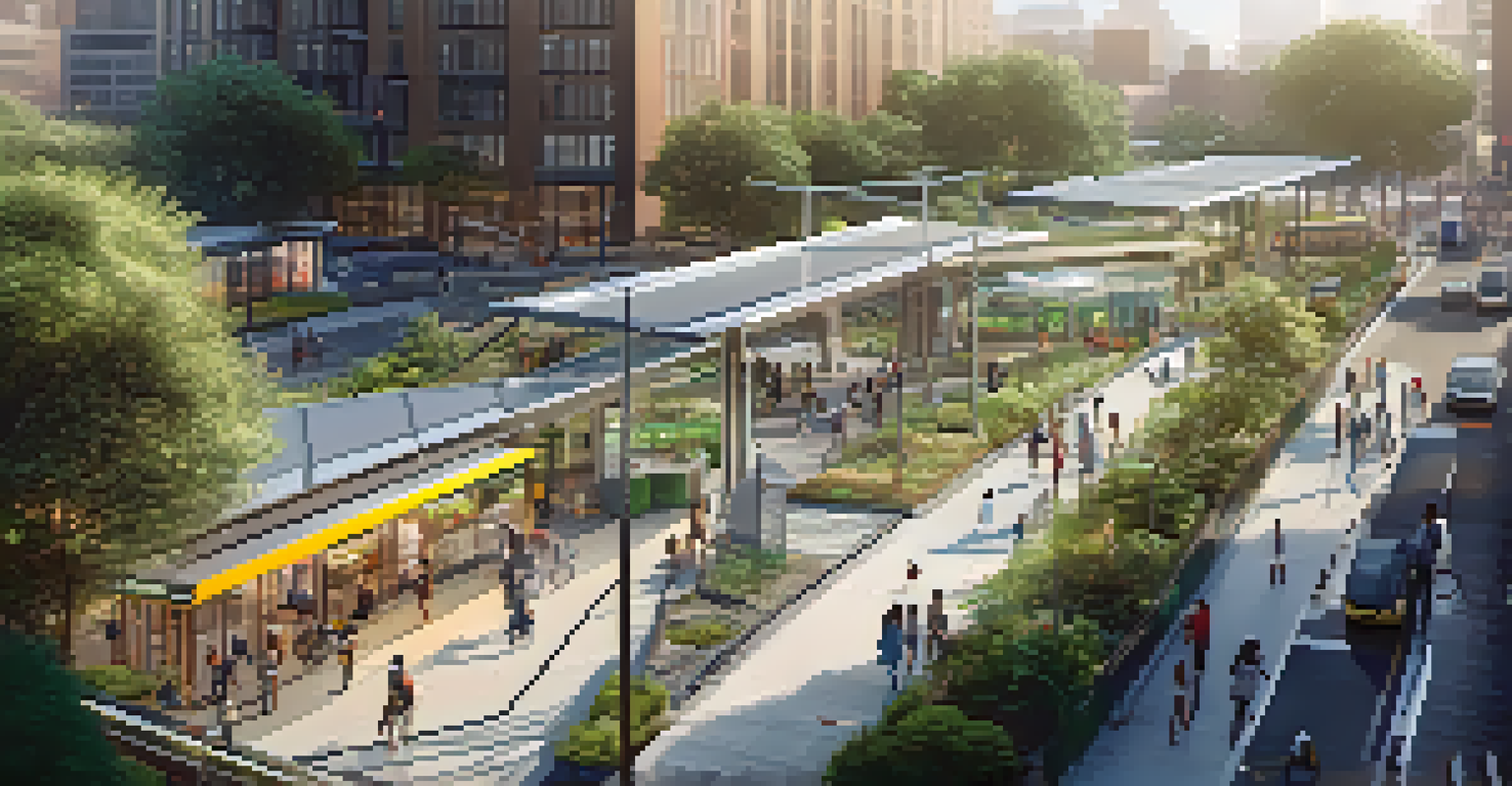Mobility as a Service: Transforming NYC's Transport Landscape

Understanding Mobility as a Service (MaaS)
Mobility as a Service, or MaaS, refers to the integration of various transportation services into a single accessible platform. Imagine having all your transport options—from buses to bike shares—available at your fingertips through one app. This concept simplifies travel planning, allowing users to choose the best modes of transport based on cost, time, and convenience.
Public transportation is a critical aspect of our urban environment, and it can be a catalyst for economic growth and social equity.
In New York City, where commuting can be a complex puzzle, MaaS could be a game changer. It not only streamlines the travel process but also promotes the use of public transport, reducing the reliance on personal vehicles. This shift is essential in a bustling metropolis where traffic congestion is a daily challenge.
By making transportation choices more straightforward, MaaS encourages sustainable travel habits. Users can easily compare different options and make informed decisions, ultimately contributing to a greener environment and a more efficient transport system in NYC.
The Current Transport Landscape in NYC
New York City's transport system is vast and diverse, consisting of subways, buses, ferries, taxis, and more. However, navigating this intricate network can be overwhelming, especially for newcomers or those unfamiliar with the city. Many commuters often feel lost in a sea of choices, leading to frustration and inefficiencies.

Currently, riders have to rely on multiple apps and services to plan their journeys, which can be time-consuming. This fragmentation not only complicates the user experience but also leads to increased wait times and missed connections. When every minute counts, such inefficiencies can significantly impact daily commutes.
MaaS simplifies urban travel
Mobility as a Service (MaaS) integrates various transportation options into one accessible platform, making travel planning easier for users.
Moreover, the existing transport system faces challenges like overcrowding and delays, particularly during peak hours. A unified MaaS platform could alleviate some of these issues by providing real-time updates and optimizing routes, ensuring a smoother travel experience for all.
Benefits of MaaS for NYC Commuters
The benefits of implementing MaaS in NYC are numerous, starting with enhanced convenience for commuters. With everything available in one app, users can plan their journeys with ease, saving both time and mental energy. This integration also simplifies payment methods, allowing users to pay for multiple services seamlessly.
The future of urban mobility is not just about transportation; it’s about creating a seamless experience for people to navigate their cities.
Another significant advantage is the potential for reduced travel costs. By analyzing data, MaaS can suggest the most economical routes and transportation options. For budget-conscious commuters, this means making smarter choices that don't compromise on efficiency.
Furthermore, MaaS promotes a shift towards sustainable transportation options, such as public transit and shared mobility services. As more people opt for these greener alternatives, the city can benefit from decreased traffic congestion and improved air quality, making NYC a more livable environment.
Integrating Existing Transport Services
For MaaS to be successful in NYC, it must effectively integrate existing transport services. This means collaborating with various agencies, including the MTA, DOT, and private mobility providers. By creating a unified data-sharing network, all transport modes can communicate, enhancing overall efficiency.
Imagine being able to book a subway ride, a bike share, and a bus transfer all within a single app. This level of integration would allow for seamless transitions between different modes of transport, minimizing wait times and maximizing convenience for users. The ultimate goal is a frictionless travel experience that adapts to individual needs.
Sustainable transport benefits NYC
By promoting public transport and shared mobility options, MaaS can help reduce traffic congestion and improve air quality in New York City.
Additionally, integrating services opens up opportunities for innovative solutions like dynamic routing. This means the system can adapt in real-time to changing conditions, such as traffic jams or service disruptions, further improving the reliability of transport options in the city.
Challenges in Implementing MaaS
While the benefits of MaaS are promising, several challenges exist in its implementation. One major hurdle is the need for collaboration among various stakeholders. Different agencies and private companies must come together to share data and resources, which can be difficult due to differing priorities and bureaucratic hurdles.
Privacy concerns also arise when integrating multiple services. Users must feel confident that their data is secure and used responsibly. Establishing transparent policies regarding data usage and ensuring compliance with regulations will be crucial to gaining public trust.
Furthermore, there is the challenge of ensuring equitable access to these services. As we embrace technology, it's essential to keep in mind the underserved communities who may not have the same access to smartphones or reliable internet. Ensuring inclusivity will be vital for the success of MaaS in NYC.
Case Studies: MaaS in Other Cities
Several cities around the globe have successfully implemented MaaS solutions, providing valuable insights for NYC. For instance, Helsinki's MaaS service, Whim, allows users to plan and pay for a variety of transport options through one app, demonstrating the potential for enhanced convenience and user satisfaction. This successful model showcases how a well-executed MaaS platform can transform urban transport.
In Los Angeles, the city has begun integrating its public transport services with ride-hailing apps, allowing for more flexible travel options. This collaborative approach highlights the importance of adapting to local needs while embracing new technologies. By learning from these examples, NYC can tailor its MaaS strategy to fit its unique transport landscape.
Integration is key to success
Successful implementation of MaaS in NYC requires collaboration among various transport agencies and innovative solutions for seamless travel.
These case studies emphasize the importance of user experience and the need for ongoing feedback and improvements. As cities implement MaaS, they must remain agile and responsive to commuter needs, ensuring that the service evolves alongside changing travel patterns and preferences.
The Future of Mobility in NYC
As we look ahead, the future of mobility in NYC appears promising with the potential integration of MaaS. This transformation could lead to a more efficient, user-friendly transport system that meets the needs of a diverse population. With technology advancing rapidly, the possibilities for innovative solutions are endless.
Moreover, the adoption of MaaS could play a pivotal role in the city's efforts to combat climate change. By promoting sustainable transport options and reducing reliance on personal vehicles, NYC can take significant steps toward a greener future. The idea of smart cities, where technology enhances the quality of life, is becoming increasingly attainable.

Ultimately, the success of MaaS in NYC will depend on collaboration among stakeholders, investment in technology, and a commitment to inclusivity. As the city embarks on this journey, it has the chance to redefine urban mobility, making it smarter, more accessible, and more sustainable for all.